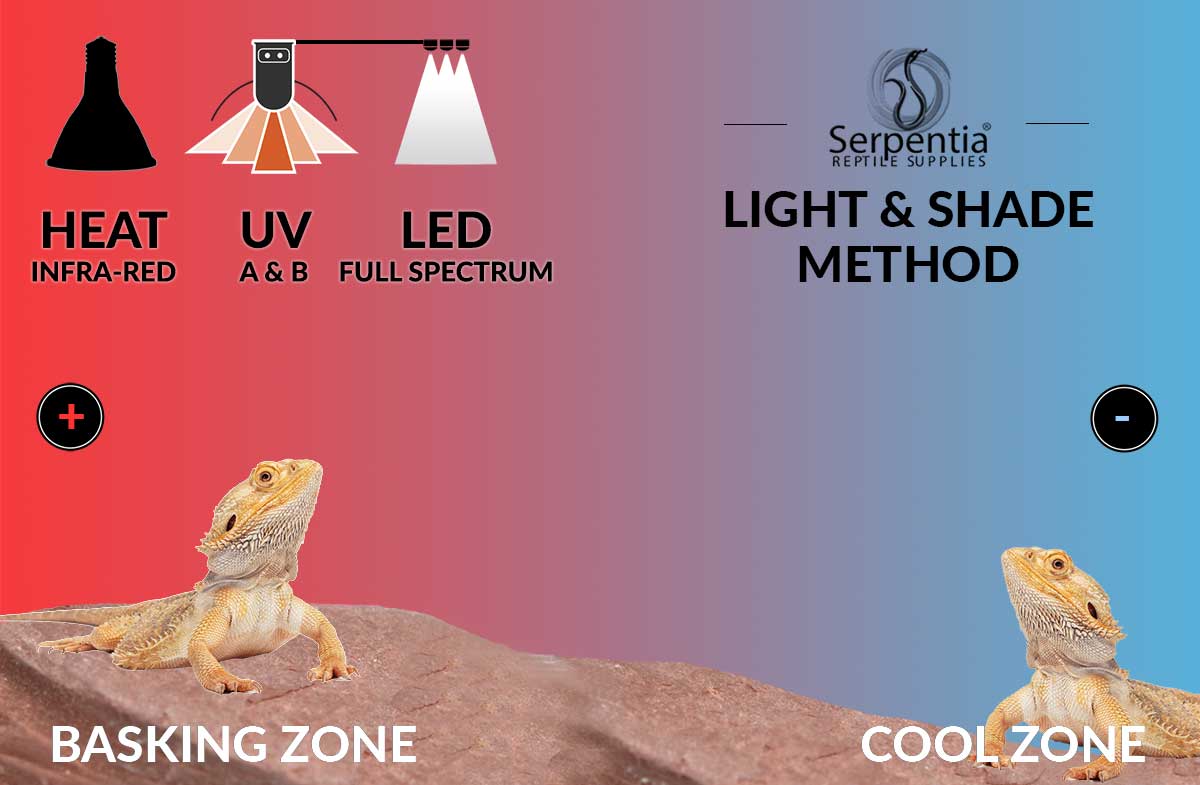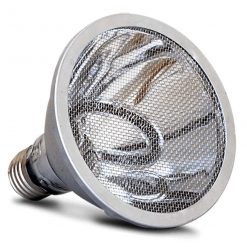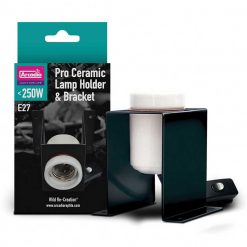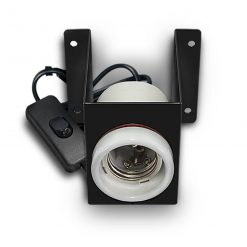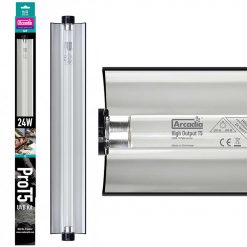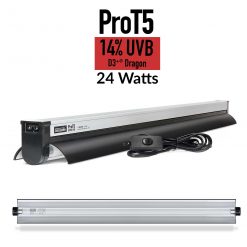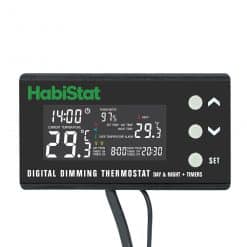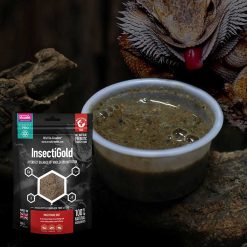Get comfy, this is a long section.
Bearded Dragons are omnivorous meaning they eat vegetable, insects, fruit and plant. You should be feeding your Beardie with a varied diet of both appropriately sized Gutloaded insects and chopped fresh vegetables and fruit.
The correct ratio of fruit and vegetables to insects is dependant upon the age of your Bearded Dragon.
We should start with looking at the wild diet of a Bearded Dragon where they will eat mostly small insects such a spiders, termites and crickets. They will also forage for flowers and leafy greens if they can find them but their wild diet will consist mostly of insect protein.
They will eat far more insect protect in their wild diet than we will plan to feed them in our captive diet. The reason being they will roam and be a lot more active in their wild environment than in their captive environment and this activity will burn more calories as a result.
If we were to feed as much protein to them as part of their captive fed diet then our Bearded Dragons would become obese and suffer with health problems.
So now we know about their wild diet lets use it as our basis and construct their ideal captive diet.
Lets have a look at their potential menu items grouped by veggies, fruits and insects. We should mention right away that not all will be suitable for baby Beardies so make sure you read the feeding section by age.
On the good to feed menu list:
Now as we are in the UK we will give you the name that we know these vegetables by so you will actually be able to find them in your store.
Vegetables:
Dandelion Greens; Turnip Tops; Artichoke Heart (uncooked); Rocket; Asparagus; Basil; Bell Peppers (Green/Red/Yellow); Pak Choi; Red & Green Cabbage; Peeled Cucumber; Butternut Squash’ Uncooked Kale, Radish, Pumpkin, Courgette & Leeks; Okra (also known as lady’s fingers); Parsnip; Broccoli; Green Beans; Carrots
Fruit:
Peeled apples; Blueberries; Blackberries; Strawberries; Cranberries; Figs; Green & Red Grapes; Cherries (without the pit); Honeydew & Cantaloupe & Watermelon; Apricot; Papaya; Peach; Pears; Mandarin Oranges; Mango; Plums; Banana (there is no need to peel the Banana!)
Insects:
Crickets; Dubia Roaches; Super Worms; Silk Worms; Butter worms; Black Soldier Fly Larvae (Phoenix Worms); Earthworms; Waxworms; Goliath Worms; Mealworms; Locusts; Red worms
On the DO NOT feed list
Dairy products; Avocado; Lettuce; Rhubarb; Beets tops; Spinach; Meat (red meat, poultry, etc.); Wild caught insects; Fish & Seafood; Fern; Buttercup; Daffodil; Bran & Wheat
The lists are long and varied but if you have something you are wondering can I feed my Beardie this and its not on either list then your default position is not to feed that item until you have thoroughly researched whether it will be suitable or not.
Picky feeders
So you have prepared a beautiful selection of fresh vegetables and fruit. It looks marvellous and you proudly offer your Beardie your culinary masterpiece and they point blank refuse to eat their greens. They can be picky and it will be a battle of wills to get some to eat your lovely prepared platter of veggies. Some will just refuse what they don’t like to eat and be grumpy with it. Stick with it for their sake! A little experimenting may be necessary on your part with the type and variety and quantity of each item when it comes to their greens. Hold in there!
When you are transitioning them from their baby to juvenile diets and in turn their adult diets they may sulk a bit. Ease them into their new feeding regime and diet as they progress from one dietary stage to the next. Patience and perseverance is the way forward for you.
Baby Bearded Dragon Diet, up to approx 4-5 months of age
Babies need to consume a lot of food to support their rapidly developing and growing bodies and it is very important that baby Beardies receive ample nutrients and vitamins.
We are aiming for approx 80% Insect Protein and 20% Vegetable.
Let a baby eat as many crickets are they want in approximately a 10 min sitting 3-4 times a day. So as you can see you are going to need an abundance of insect protein.
Baby Beardies have a great appetite and will attempt to eat insects that are too large. Feed them crickets that are no longer 8mm which is usually when crickets are in their 3rd instar development phase. Or to look at it another way the length of the cricket must be smaller than the distance between your Beardies eyes. Never offer baby bearded dragons prey foods that are too large as this can cause the bearded dragon serious injury and can even be fatal.
Small fruit flies and the smallest waxworms available are also suitable. Smaller insects will help to ensure the baby bearded dragon can properly chew and digest its food without any problems.
Keep live mealworms off the menu of live foods for a baby beardie, mealworms due to their tougher outer shell can be difficult for the baby to digest, and could lead in worse case scenario to paralysis.
Babies have a high metabolism and you should be feeding them smaller frequent meals. Whatever they dont eat in each sitting remove after 30 minutes.
Offer finely chopped vegetables once per day is optimum and will help your baby acquire a taste for veggies.
Avoid overfeeding! They will eat with gusto but this could lead to obesity and longer term health issues. Whatever they don’t eat in their sitting remove after 30 minutes.
You should ensure their lighting system is switched on at least 30 minutes before offering them their first meal meal and are left on for at least 30 minute after their last meal. This will help with their appetite and aid digestion.
Calcium and Vitamins supplements for babies
Dust their feeders with a Calcium supplement once a day for 5 days a week. On the other 2 days a week they don’t receive this supplement dust their feeders with their multi vitamin supplement.
They should be having their live foods dusted in something once a day, every day.
Like all babies they demand and require your attention to thrive, be prepared to give it to them.
Juvenile Bearded Dragon Diet, 4/5 months to approx 18 months of age
If you have done your job a juvenile Bearded Dragon will have gained mass and some fat reserves and can be fed less frequently.
Do not try and feed a juvenile Bearded Dragon at the same rate as a baby as it could become obese and develop health issues later.
The ratio of insect proteins to vegetables will be differ to that you feed a baby.
You want to start to reduce insect protein and are aiming to achieve 50% Insect to 50% Veggie for a juvenile by the time they are around one year old. You are aiming to continue to reduce the insect content of their diet to around 20% by the time they are an adult at around 18 months old.
Don’t try and do this is one hit but gradually change the ratio over time.
Reduce the amount of insect prey to one feeding per day and you can increase the size of the feeder insect while remembering not to feed anything larger than the distance between its eyes. Mealworms can now be added to a juveniles diet once or twice a week.
So in summary an evolution of less insect protein and more vegetables than you would feed to a baby.
Adult Bearded Dragon Diet
We consider Bearded Dragons to be adults at around 18 months of age. This is broadly when a Beardie has reached peak sexual maturity and growth slowed/stopped.
An adult should be offered a balanced meal and diet of insects and vegetables once a day though this can be via one sitting but ideally it should be split into a meal in the morning and a meal in evening.
Provide more vegetables and fruit at this point in their life and less insect protein. You are now aiming for around 20% Insect Protein and 80% Veggies, a complete opposite of that you were feeding a baby.
Don’t forget to ensure their lighting system is switched on at least 30 minutes before offering them their morning meal and are left on for at least 30 minute after their evening meal to help with their appetite and digestion.
Adults can be very susceptible to obesity so keep a close eye on them and adjust the amount and type of food offered accordingly.
Because your Bearded Dragon still needs a staple source of protein you will need to provide them with insect protein. However unlike youngsters they will not need nearly as much as they are no longer growing. The exception is when you have an underweight Beardie and you want them to gain weight, for example an animal that has been ill or not perviously cared for properly.
Calcium & Vitamins for an Adult Bearded Dragon
Once your bearded dragon is an adult you can reduce the Calcium/D3 to 2-3 times per week and adding multi vitamins to their diet once per week. Just make sure their food never gets dusted more than once per day.
Wrapping up
All fresh fruit and vegetables should be washed before being offered to your Bearded Dragon to ensure they are chemical and pesticide free. You wouldn’t want to eat them so don’t feed them to your Beardie so source and provide safe and quality ingredients. Buy Organic if you can.
You can also feed frozen and thawed mixed vegetables and fruits and this does have the advantage that you always have access to a stock of their food in your freezer.
Remove any uneaten organic matter to avoid your Bearded Dragon eating rotting or mouldy food and to help prevent the potential for harmful bacteria building up within the vivarium.
Prepared Complete Diets and Supplementary Foods that are specifically designed for Bearded Dragons are also an ideal source of balanced nutrition. Use Complete Diets and Dietary supplements as part of a varied diet.


